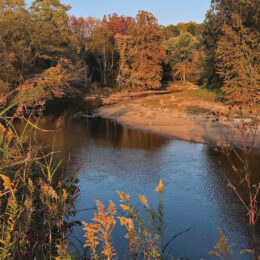 Pollinators are all the “buzz” these days as focus on the health of pollinators, so critical to food and ecosystems, continues.
Pollinators are all the “buzz” these days as focus on the health of pollinators, so critical to food and ecosystems, continues.
It may surprise you to learn that the honeybee is native to Europe and was introduced to the United States. But there are also numerous other pollinator species including native bees, butterflies and moths, beetles, birds and bats. Many pollinators have suffered from loss of habitat, chemical misuse, diseases and parasites.
Gardeners play a critical role in the nurturing and conservation of both native and introduced pollinators. Gardens and landscapes provide pollinators with food, water, shelter and habitat to complete their life cycles. Urban areas typically feature large areas of pavement and buildings and offer little in the way of food or shelter for pollinators — plantings can help bridge the gap.
Honeybees and other pollinators need protein from flower pollen and carbohydrates from flower nectar. Plan to provide a variety of different types of flowers, and aim to have three different flower species in bloom throughout the growing season. Showy colorful flowers and massed groups of flowers particularly in small gardens provide efficient feeding stations for the pollinators. Flowering trees and shrubs also provide excellent food sources.
Pollinators also need shelter from wind, scorching sun and heavy rains. Plants, garden structures such as fences, and windbreaks may make the garden more attractive to pollinators.
Pesticides can harm bees and other pollinators directly or may change their behavior or reproductive potential. Some chemicals make pollinators more susceptible to disease. You can protect pollinators by using alternative prevention and control strategies such as hand-picking pests and mulching and by being selective when it becomes necessary to use pesticides.
Read and follow all label directions and pay particular attention to timing your application to minimize impact on pollinators. Generally, bees and others are less active in very early morning or at dusk. Choose spray rather than dust formulations of pesticides to lessen potential for contact. Avoid using pesticides in areas where pollinators are likely to forage. Maintain a buffer “no-spray area” when possible. Wait until flowers have faded (petal-fall) before applying. Mow the lawn to remove flowers of weeds before spraying.
Want to learn more? Here are a few selected resources on pollinators:
• National Pollinator Partnership,
http://pollinator.org
• Selecting Plants for Pollinators, http://pollinator.org/PDFs/Guides/EBFContinentalrx13FINAL.pdf
• Purdue Entomology Info on Neonicotinoids (Resources for insect pest control with pollinator safety in mind.), http://extension.entm.purdue.edu/neonicotinoids. …
Ask Rosie
Terrestrial algae: slippery when wet!
For the last few years we have noticed some green blobs on our gravel drive. It only grows in size when it rains and dries up and turns black when the weather is sunny. It looks like turkey droppings and feels like jelly when wet. Is this some kind of new land algae?
— Don Vanover, via email
It sounds like it could be a terrestrial algae known as Nostoc which can grow on stone, concrete, gravel, and even on the lawn especially on compacted turf. This algae stays dormant until the right conditions — warm moisture — come along, and we’ve had plenty of that this summer! And the slimy blobs are more than just unsightly, they are really slippery so can be hazardous especially on smooth surfaces such as patios and greenhouse floors.
Anything you can do to aerate and dry the area will help control it, but there’s not much you can do about the rain. Copper sulfate may help knock it back but control will be short term and unless conditions dry, the algae will return. Note that raking the algae may just help spread it around.
Additional info about Nostoc is available at http://bygl.osu.edu/content/what-0;
http://msue.anr.msu.edu/news/nostoc_a_green_jelly_like_substance_growing_in_lawns.
Rosie Lerner is the Purdue Extension consumer horticulturist and a consumer of Tipmont REMC. Questions about gardening issues may be sent to: “Ask Rosie,” Electric Consumer, P.O. Box 24517, Indianapolis, IN 46224, or ec@ElectricConsumer.org


